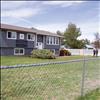Avalanche danger remains high
Hey savvy news reader! Thanks for choosing local.
You are now reading
1 of 3 free articles.
An unusual weather pattern this winter has made for dangerous snow conditions in the backcountry for snowmobilers and skiers. Multiple reports of human-triggered avalanches have occurred throughout northwestern Montana in recent weeks, requiring outdoor enthusiasts to use caution when entering the high country.
National Weather Service Missoula forecaster Marty Whitmore says the amount of snow the region has received has been deceiving to many area residents during a telephone interview. Northwestern Montana generally receives steady snow throughout the winter, but this year it has come in short bursts.
Several avalanche advisory centers compile up-to-date reports online to help notify those entering the backcountry of troublesome areas. In Missoula, the West Central Montana Avalanche Advisory covers an extensive region, from the Bitterroot Range to Lookout and Lost Trail Passes, and from the Rattlesnake Mountains to the southern Mission and Swan Mountain ranges.
Tim Laroche, a forecaster for the Missoula-based advisory team, reports that avalanche danger can sometimes be difficult to predict, as it all depends on possible weak layers of snow beneath freshly fallen snow and how steep the terrain is.
“Generally speaking, avalanches happen between 30-45 degree slopes,” Laroche said. “(But) it can happen in less steep slopes in extreme avalanche zones. It depends on where you are and whether there has been a heavy amount of new snow.”
“It depends on the amount of precipitation in a short amount of time,” Whitmore added. “(Steep slopes) can’t handle a heavy load.”
Whitmore also noted that people should watch for large wind patterns, as blowing and drifting snow can form cornices that are unstable and dangerous.
While people tend to flock to the high country immediately following a large snowstorm to recreate, Laroche noted this is the most dangerous time to be on steep terrain. He recommends recreating on flat terrain until the old snow has time to adjust to the new snow load.
Human-triggered avalanches occur when the weight of a snowmobile or person triggers an avalanche to slide.
“Snow doesn’t like rapid changes,” Laroche said. “(Human activity) can override the weak snow layer.”
There are a few things to bring along if heading into a potentially dangerous avalanche area in the backcountry. Before going out, Laroche says to always bring standard avalanche gear, which consists of a beacon, probe, shovel and ideally a partner with the same equipment.
If caught in an avalanche, the first thing someone should do is scream, along with swim and fight to stay on top of the snow and debris until it settles, which is easier said than done, Laroche noted. He added that prevention, staying informed of avalanche dangers and avoiding hazardous areas, is the best way to stay safe.
“The last big storm favored the northern Mission and Swan ranges,” Laroche said. “(This moved) the areas to high danger,”
According to Whitmore, weather in the region is expected to remain wetter-than-normal, as active systems are believed to continue throughout March.
To check the safety of an area for avalanche safety, visit www.missoulaavalanche.org and www.glacieravalanche.org















